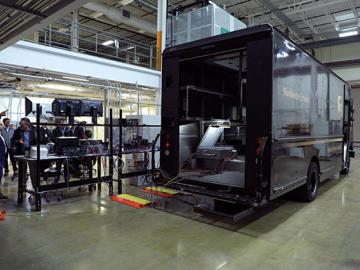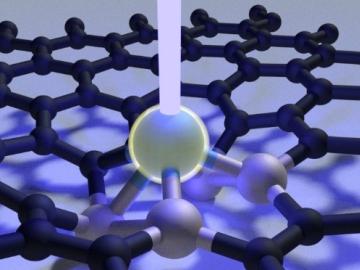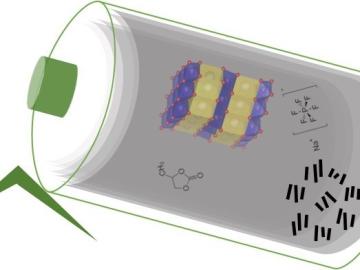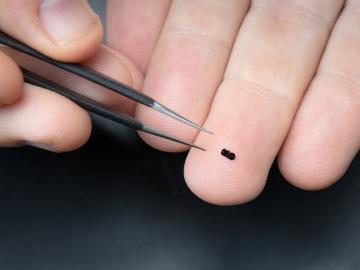
Filter News
Area of Research
- Advanced Manufacturing (1)
- Biology and Environment (5)
- Computer Science (1)
- Energy Science (19)
- Fusion Energy (1)
- Isotope Development and Production (1)
- Isotopes (3)
- Materials (14)
- National Security (4)
- Neutron Science (4)
- Nuclear Science and Technology (7)
- Quantum information Science (2)
- Supercomputing (10)
News Topics
- (-) Cybersecurity (4)
- (-) Frontier (1)
- (-) Grid (7)
- (-) Isotopes (8)
- (-) Machine Learning (8)
- (-) Microscopy (8)
- (-) Molten Salt (2)
- (-) Physics (13)
- (-) Space Exploration (4)
- 3-D Printing/Advanced Manufacturing (29)
- Advanced Reactors (14)
- Artificial Intelligence (8)
- Big Data (11)
- Bioenergy (13)
- Biology (5)
- Biomedical (22)
- Biotechnology (2)
- Buildings (1)
- Chemical Sciences (5)
- Clean Water (2)
- Composites (1)
- Computer Science (39)
- Coronavirus (25)
- Critical Materials (3)
- Energy Storage (21)
- Environment (29)
- Exascale Computing (3)
- Fusion (14)
- High-Performance Computing (3)
- Materials (2)
- Materials Science (39)
- Mathematics (2)
- Mercury (1)
- Nanotechnology (17)
- National Security (2)
- Neutron Science (35)
- Nuclear Energy (34)
- Polymers (7)
- Quantum Science (14)
- Security (3)
- Summit (17)
- Transportation (15)
Media Contacts

Researchers at the Department of Energy’s Oak Ridge National Laboratory (ORNL) in late February demonstrated a 20-kilowatt bi-directional wireless charging system installed on a UPS medium-duty, plug-in hybrid electric delivery truck.

In the Physics Division of the Department of Energy’s Oak Ridge National Laboratory, James (“Mitch”) Allmond conducts experiments and uses theoretical models to advance our understanding of the structure of atomic nuclei, which are made of various combinations of protons and neutrons (nucleons).

In the race to identify solutions to the COVID-19 pandemic, researchers at the Department of Energy’s Oak Ridge National Laboratory are joining the fight by applying expertise in computational science, advanced manufacturing, data science and neutron science.

As a teenager, Kat Royston had a lot of questions. Then an advanced-placement class in physics convinced her all the answers were out there.

Scientists at Oak Ridge National Laboratory used a focused beam of electrons to stitch platinum-silicon molecules into graphene, marking the first deliberate insertion of artificial molecules into a graphene host matrix.

Scientists at the Department of Energy’s Oak Ridge National Laboratory have developed a new method to peer deep into the nanostructure of biomaterials without damaging the sample. This novel technique can confirm structural features in starch, a carbohydrate important in biofuel production.
A team of scientists led by Oak Ridge National Laboratory found that while all regions of the country can expect an earlier start to the growing season as temperatures rise, the trend is likely to become more variable year-over-year in hotter regions.

Researchers at ORNL demonstrated that sodium-ion batteries can serve as a low-cost, high performance substitute for rechargeable lithium-ion batteries commonly used in robotics, power tools, and grid-scale energy storage.

The prospect of simulating a fusion plasma is a step closer to reality thanks to a new computational tool developed by scientists in fusion physics, computer science and mathematics at ORNL.

Liam Collins was drawn to study physics to understand “hidden things” and honed his expertise in microscopy so that he could bring them to light.


